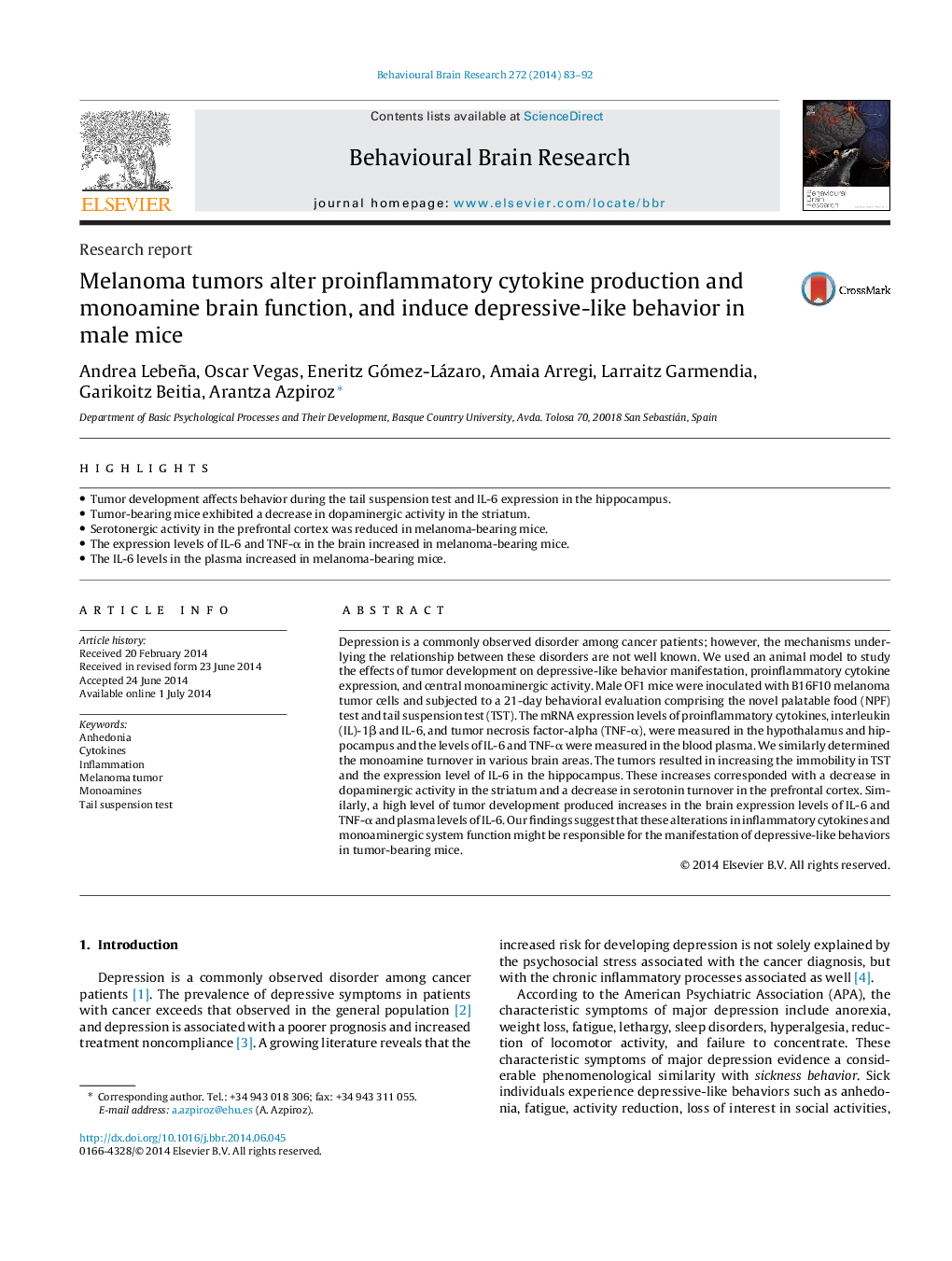| Article ID | Journal | Published Year | Pages | File Type |
|---|---|---|---|---|
| 6257478 | Behavioural Brain Research | 2014 | 10 Pages |
â¢Tumor development affects behavior during the tail suspension test and IL-6 expression in the hippocampus.â¢Tumor-bearing mice exhibited a decrease in dopaminergic activity in the striatum.â¢Serotonergic activity in the prefrontal cortex was reduced in melanoma-bearing mice.â¢The expression levels of IL-6 and TNF-α in the brain increased in melanoma-bearing mice.â¢The IL-6 levels in the plasma increased in melanoma-bearing mice.
Depression is a commonly observed disorder among cancer patients; however, the mechanisms underlying the relationship between these disorders are not well known. We used an animal model to study the effects of tumor development on depressive-like behavior manifestation, proinflammatory cytokine expression, and central monoaminergic activity. Male OF1 mice were inoculated with B16F10 melanoma tumor cells and subjected to a 21-day behavioral evaluation comprising the novel palatable food (NPF) test and tail suspension test (TST). The mRNA expression levels of proinflammatory cytokines, interleukin (IL)-1β and IL-6, and tumor necrosis factor-alpha (TNF-α), were measured in the hypothalamus and hippocampus and the levels of IL-6 and TNF-α were measured in the blood plasma. We similarly determined the monoamine turnover in various brain areas. The tumors resulted in increasing the immobility in TST and the expression level of IL-6 in the hippocampus. These increases corresponded with a decrease in dopaminergic activity in the striatum and a decrease in serotonin turnover in the prefrontal cortex. Similarly, a high level of tumor development produced increases in the brain expression levels of IL-6 and TNF-α and plasma levels of IL-6. Our findings suggest that these alterations in inflammatory cytokines and monoaminergic system function might be responsible for the manifestation of depressive-like behaviors in tumor-bearing mice.
